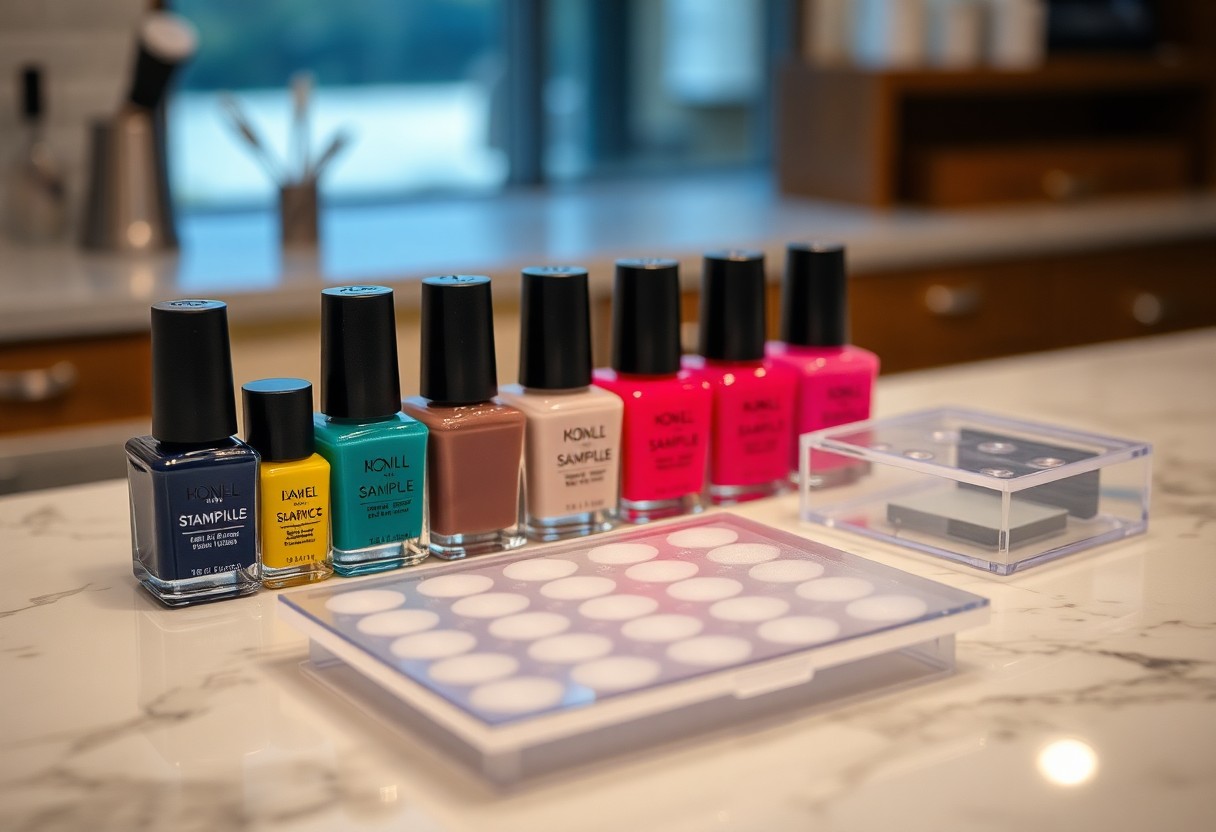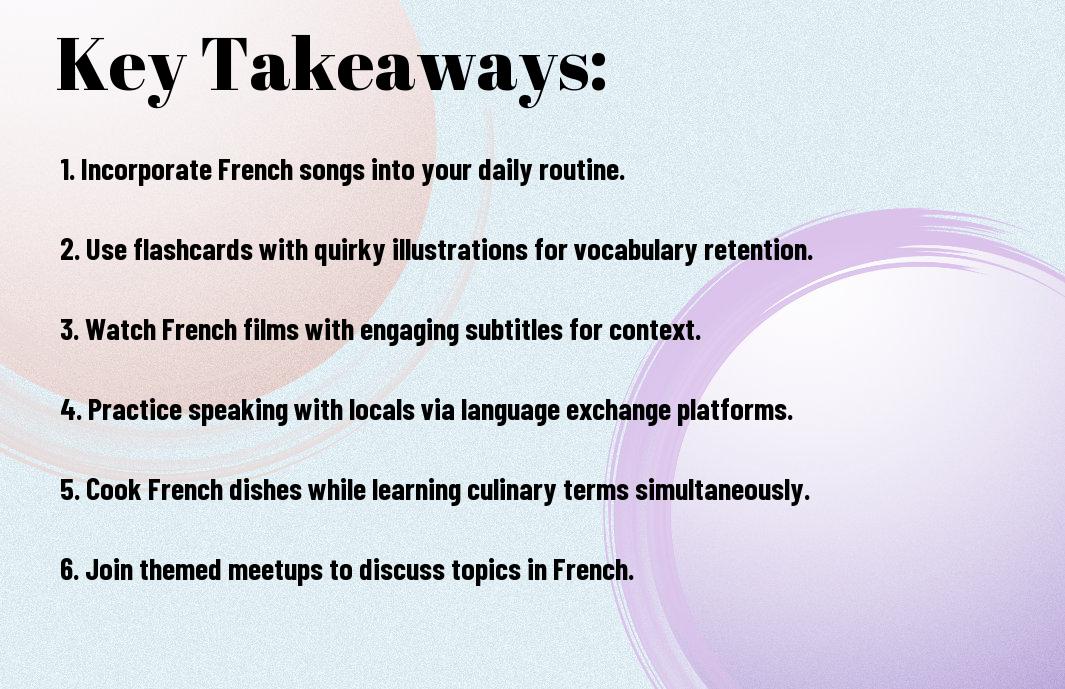It’s necessary to consider how your nails can complement your seasonal wardrobe, enhancing your overall style and keeping your look cohesive. By understanding color theory and the latest trends, you can easily coordinate your nail designs with your outfits for any season. Whether you prefer bold hues for summer or subtle shades for fall, this guide will provide you with practical tips to ensure your nails are always in sync with your fashion choices. Elevate your style game by learning how to effortlessly match your nails to the colors and patterns of the season.

Key Takeaways:
- Color Coordination: Choose nail colors that complement the predominant shades in your seasonal wardrobe to create a cohesive look.
- Seasonal Trends: Stay updated on seasonal trends, as colors and finishes often change with the seasons, allowing you to keep your style fresh.
- Textures and Finishes: Experiment with different nail textures such as matte or glossy, and consider seasonal designs, like florals for spring or metallics for winter, to enhance your style.

Understanding Seasonal Colors
For anyone looking to elevate their style, understanding seasonal colors is vital. Each season brings unique hues that reflect the environment, from the vivid greens and florals of spring to the warm and earthy tones of autumn. By aligning your nail colors with these seasonal palettes, you can create a cohesive look that enhances your wardrobe and showcases your personal style. This connection not only keeps your appearance fresh but also adds an element of thoughtfulness to your overall aesthetic.
The Color Wheel and Seasonal Palettes
Understanding the color wheel is the first step in exploring seasonal palettes. The color wheel illustrates how different colors interact and complement each other. By identifying the dominant colors of each season—such as pastels for spring or rich jewel tones for winter—you can select nail shades that harmonize beautifully with your clothing. This knowledge allows you to play with contrasts and complements, ensuring your nails and outfits are perfectly aligned.
Influences of Seasonality on Color Choices
Understanding how the seasons influence your color choices helps you make intentional decisions. Each season evokes different feelings and moods, which are often mirrored in colors; for instance, summer is lively and bright, while winter leans towards deeper, more muted shades. These natural shifts should guide your nail selections, ensuring that every detail in your look resonates with the seasonal vibe.
Seasonal shifts not only dictate the colors you see in nature but also reflect your lifestyle. In spring, you might gravitate towards pastel pinks and yellows that evoke freshness and new beginnings. Meanwhile, summer invites bolder colors like corals and bright blues that mirror the vibrant outdoors. As fall approaches, you may find earthy tones such as browns and deep reds more appealing, reflecting the changing leaves. With winter comes richer hues like navy and burgundy that evoke warmth against the cold backdrop. By considering these influences, your nail choices will harmonize seamlessly with the season, enhancing your overall style.
Matching Nail Colors to Seasonal Trends
Clearly, pairing your nail colors with seasonal trends not only enhances your style but also showcases your creativity. As the seasons change, so do the colors that resonate with the mood and atmosphere around you. Staying attuned to these shifts allows you to seamlessly integrate your nails into your overall wardrobe. From refreshing pastels to opulent jewel tones, each season brings with it the opportunity to express yourself through an array of vibrant hues.
Spring: Pastels and Brights
About spring nails, think soft pastels and cheerful brights that reflect the blossoming nature around you. Colors like baby blue, lavender, and hot pink can add that playful joy to your look. These shades not only embody the spirit of renewal but also complement floral patterns and lighter fabrics that dominate your spring wardrobe.
Summer: Bold and Vibrant Shades
Seasonal selections for summer are all about embracing bold, saturated colors. Bright reds, sunny yellows, and electric blues can make a striking statement against your sun-kissed skin. These vivacious hues exude energy, perfectly matching your adventurous summer outings and flirty outfits.
Considering summer’s intense heat, opt for long-lasting formulas that resist chips and fading. You want your nails to stay vibrant even through beach days and late-night barbecues. Pairing your bold nail shades with printed dresses or denim shorts makes it easy to evoke a fun, carefree vibe. Don’t shy away from incorporating nail art or patterns to elevate your look even further.
Fall: Rich and Earthy Tones
Colors for fall transition into warm, earthy tones that reflect the changing leaves. Think deep burgundy, burnt orange, and olive green that harmonize beautifully with the essence of autumn. These shades can easily complement your layering pieces and cozy fabrics, enhancing your seasonal aesthetic.
But fall doesn’t have to be limited to muted hues; consider mixing in metallics or a pop of color! Rich jewel tones, like emerald and sapphire, can accentuate both casual and formal outfits. Layering textures and patterns allows you to create a cohesive look that showcases your individual style while remaining in tune with the season.
Winter: Dark and Jewel Tones
Below, winter calls for deep, luxurious shades, such as midnight blue, plum, and rich gold. These colors not only feel sophisticated but also reflect the coziness of the season. Dark hues can be especially flattering against the stark winter landscape and pair wonderfully with your winter wardrobe of heavy knits and tailored coats.
Brights during winter can beautifully contrast against the monochrome tones often seen in winter fashion. Incorporating jewel tones can brighten your overall look while providing a lavish finish to your nails. So whether you’re attending a holiday party or simply enjoying the season, let your nails shine with opulence while staying cohesive with your outfits.
Nail Art Inspiration for Each Season
After selecting the perfect colors for your seasonal wardrobe, it’s time to draw inspiration from the essence of each season. Vibrant florals for spring, sun-soaked designs for summer, warm earthy tones for fall, and icy motifs for winter can all elevate your look. By integrating nail art that reflects seasonal themes, you ensure that your nails remain a stylish extension of your fashion choices, serving as the finishing touch to your overall aesthetic.
Seasonal Patterns and Designs
One exciting way to enhance your nail art is by incorporating seasonal patterns and designs. Think playful polka dots for spring, palm leaves for summer, plaids for fall, and snowflakes for winter. These seasonal motifs can not only coordinate beautifully with your outfits but also express your personal style and creativity. Let your nails be a canvas that tells the story of the changing seasons!
Incorporating Textures and Finishes
By exploring different textures and finishes, you can add depth and dimension to your seasonal nail art. Matte topcoats, glossy finishes, or even glitter overlays bring a unique flair to your designs, allowing you to personalize your nails while keeping them in line with seasonal trends.
Textures play a vital role in nail aesthetics and can elevate even the simplest designs. Consider adding a matte finish to a rich winter color for an elegant touch, or a glossy topcoat over vibrant summer hues for that eye-catching shine. Embellishments like rhinestones or foils can further enhance your seasonal look, making your nails stand out. Experimenting with various textures will not only keep your nail art fresh, but also anchor your style to the seasonal themes you’ll embrace throughout the year.
Tools and Products for Nail Matching
Despite the wide variety of nail products available, selecting the right tools can significantly enhance your nail matching experience. You’ll need necessarys like a high-quality base coat, top coat, and nail files, in addition to nail polishes that align with your season’s color palette. Investing in a good set of brushes and an efficient drying lamp can also elevate your nail art techniques, making your manicures not just stylish but also long-lasting.
Essential Nail Care and Prep
Besides selecting the right colors, preparing your nails is vital for an impeccable look. Start by cleaning your nails thoroughly and trimming any uneven edges. Applying a nourishing cuticle oil will hydrate your cuticles, while a base coat is key to preventing staining and ensuring longevity in your nail color. These foundational steps will help your nails look vibrant and your color choices truly stand out.
Recommended Nail Polishes and Brands
An array of nail polish brands cater to seasonal aesthetics, but a few stand out for their quality and color range. Look for brands like Essie, OPI, and Zoya, which offer seasonal collections that align with the latest trends. Each of these brands provides a wide selection of colors, ensuring that you will find the perfect match for your wardrobe. You’ll find that their formulas deliver excellent coverage and durability, allowing you to flaunt your customized look with pride.
Hence, choosing nail polishes from these reputable brands not only enhances your style but also aligns your nails with seasonal moods. With a reputation for quality, these brands often release limited editions that perfectly capture seasonal colors, ensuring you can keep your nails fresh and relevant. Explore their collections and experiment with textures like matte or glossy finishes to create unique looks tailored to your complete outfit.
Tips for Maintaining Nail Color Throughout the Seasons
Unlike your wardrobe, your nail color can be a canvas for seasonal expression that lasts. To keep your nails vibrant:
- Apply a quality base coat to prevent chipping.
- Use a top coat for added shine and protection.
- Keep your nails moisturized to prevent dryness.
- Limit exposure to harsh chemicals and prolonged water contact.
- Reapply nail polish and top coat every week for longevity.
The more effort you put into maintaining your nails, the more they’ll enhance your seasonal style. For inspiration, check out Autumn is Nature’s Way of Showing Off—Your Nails ….
Protection Against Seasonal Elements
Color can fade and chip due to seasonal conditions like dry air or humidity. Shield your nails from these elements by wearing gloves during harsh weather and using hand creams that nourish and protect while locking in moisture. If you’re in an environment with changing temperatures, be mindful of how your nails react and adjust your routine accordingly.
Regular Maintenance and Touch-Ups
Protection isn’t just about external factors; it also involves regular upkeep of your nails. To maintain a polished look, schedule routine manicures or do touch-ups at home every week. This ensures chips and cracks are addressed promptly, keeping your nails looking fresh and vibrant.
Indeed, regular maintenance goes beyond just applying polish. You should also file your nails regularly to prevent breakage and to maintain their desired shape. Incorporate moisturizing treatments into your routine to nourish and strengthen your nails, and consider using a strengthening base coat to protect against seasonal wear and tear. By investing a little time into maintaining your nails, you can enjoy their beauty throughout the season.
To wrap up
From above, it’s clear that matching your nails to your seasonal wardrobe enhances your overall style. By paying attention to color palettes, incorporating trends, and selecting nail art that reflects your fashion choices, you can create a cohesive look. As you transition between seasons, rotate your nail polish shades and designs to align with the mood of your outfits. This way, you can express your personality and keep your style fresh and exciting all year round.
FAQ
Q: How do I choose nail colors that complement my seasonal wardrobe?
A: To choose nail colors that complement your seasonal wardrobe, start by analyzing the primary colors in your clothing for that season. For spring, light pastels and vibrant hues work well, while summer is perfect for bold and bright colors. In autumn, opt for earthy tones and deep shades, and for winter, consider rich, dark colors and metallics. Look for shades that echo the tones of your clothing or mix in hues that contrast for a fashionable pop.
Q: What are some tips for coordinating nail art with seasonal outfits?
A: Coordinating nail art with seasonal outfits can be fun and creative. For example, during spring, floral designs or abstract patterns in pastel colors can enhance a fresh look. Summer might call for bright geometric designs or beach-themed art. In fall, try incorporating leaf motifs or warm gradients, while winter designs can include snowflakes, holiday themes, or glitter. Just ensure the colors and patterns echo or contrast wisely with your wardrobe for a cohesive style.
Q: Are there specific nail finishes that work better for certain seasons?
A: Yes, different nail finishes can enhance your seasonal style. In spring and summer, a glossy or high-shine finish feels vibrant and fresh. Matte finishes can offer a chic and stylish alternative for fall and winter, providing depth and a modern touch. Glitter and metallic finishes are perfect for winter festivities, while sheers and creams are ideal for a light summer vibe. Choosing the right finish can elevate the overall look of your nails alongside your outfits.
Q: How can I maintain my nail color throughout the season?
A: To maintain your nail color throughout the season, start with a good base coat to protect your nails and help the color adhere better. After applying your chosen nail color, finish with a top coat for shine and longevity. Additionally, consider using quick-dry formulas or gel polishes that resist chips and fading. Regular touch-ups and moisturizing your hands and cuticles can also keep your nails looking fresh and vibrant as you transition through seasonal outfits.
Q: Is it okay to mix and match nail colors with different seasonal outfits?
A: Absolutely! Mixing and matching nail colors with different seasonal outfits can showcase your personal style. It’s an opportunity to experiment with trends and express your creativity. Don’t hesitate to mix seasonal colors or use accent nails with contrasting shades to add uniqueness. Just ensure that the final combination feels balanced and enjoyable to you. Have fun with the process, allowing your nails to reflect your mood and personality throughout the season!







